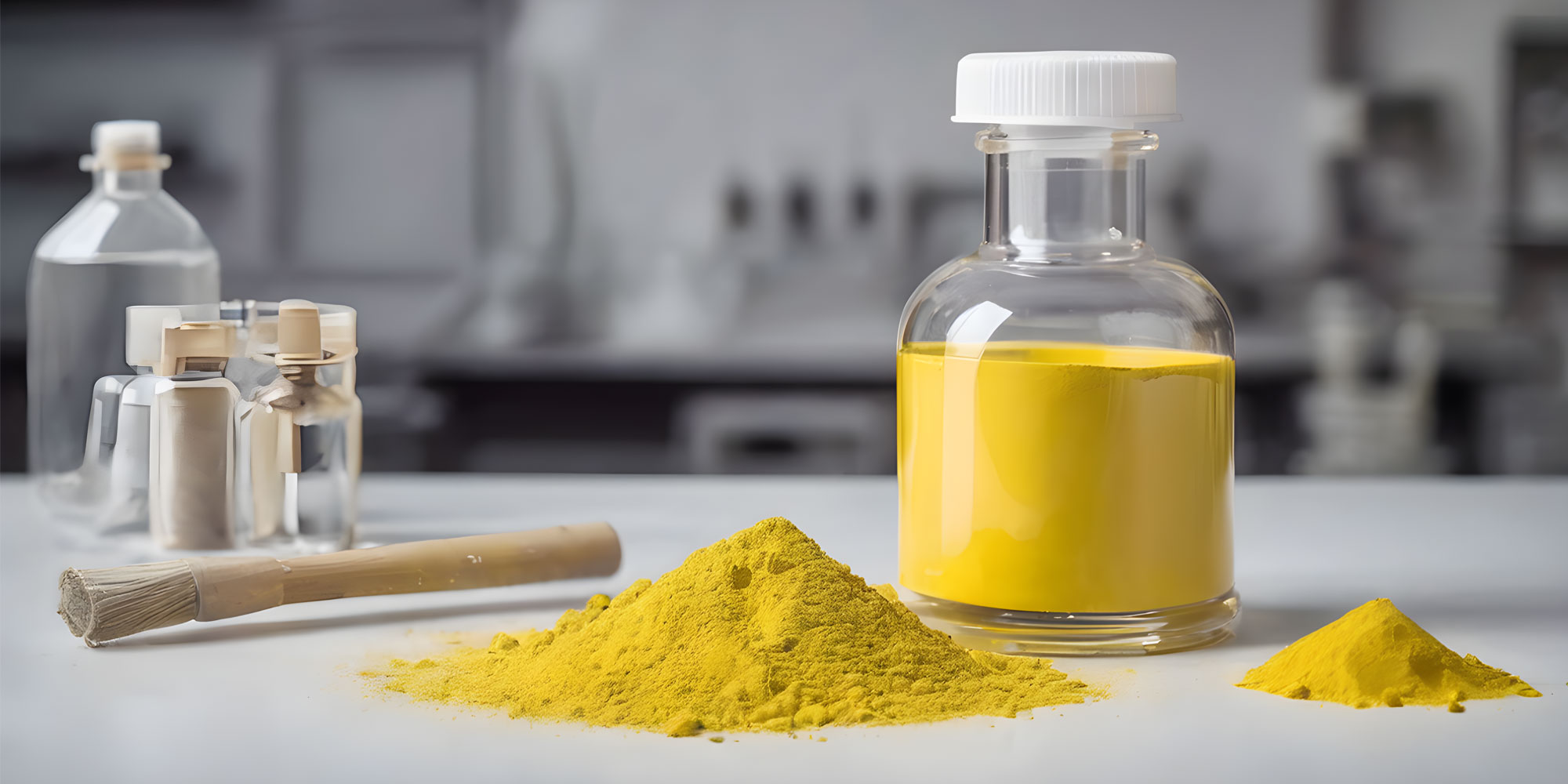Iodoform: How this 200-year-old molecule is used today
By Jillian Jastrzembski
Chemistry and History
If iodoform sounds unfamiliar, then perhaps chloroform rings a bell. Iodoform is actually a direct analog of the common chemical solvent chloroform, but in this case the three chlorine atoms have been replaced with iodine, another halogen. Also called tri-iodomethane, iodoform is a chemical with the formula CHI3.
First discovered by Georges Serullas in 1822, iodoform was added to wound-healing formulations like Whitehead’s Varnish and Bismuth Iodoform Paraffin Paste (BIPP) in the late 1800s to early 1900s, and was particularly critical during World War I.
It is a crystalline solid with a lemon-yellow hue. It has a pungent, unpleasant odor and slightly sweet taste. It is insoluble in water, but easily soluble in organic solvents. Thanks in large part to its antimicrobial properties, it is commonly used as an antiseptic in wound healing especially for dental and veterinary applications. It is also useful for its resorption capabilities and radiopacity.
Common formulations containing iodoform
Whitehead’s varnish: Following the discovery of iodoform in 1822 by Georges Serullas, Walter Whitehead was the first to incorporate iodoform into an antiseptic formulation in 1891. The modern-day version of this paste contains iodoform, benzoic acid, storax, Balsam of Tolu, and ether.
Bismuth Iodoform paraffin paste (BIPP): In 1917, during World War I, Rutherford Morison reported a mixture of iodoform, bismuth subnitrate, paraffin base, which could be used to accelerate wound healing and reduce infection rates in gunshot victims. Although considered critical during World War I, later reports of toxicity have limited the usage of this formulation.
Alvogyl (Septodont): This formulation is commonly used for dry-socket in dentistry. It is a proprietary, brown fibrous paste with anesthetic properties. It contains butamben and eugenol, with iodoform as an antiseptic agent.
Calcium hydroxide and iodoform: This is available as a pre-made blend, and finds particular use as a root canal filling, as discussed above. The use of iodoform is an antimicrobial agent is somewhat controversial, and most scientists agree that more research is needed to ascertain its effectiveness.
Modern Day Applications of Iodoform
Root canal treatment of deciduous teeth – A 2022 review investigated the effectiveness of iodoform-based fillings for root canals of deciduous teeth. Deciduous teeth are commonly referred to as “baby” teeth, and there are only 20, later to be replaced by permanent teeth. The authors of the review observed that, despite the short-comings of iodoform, iodoform-based fillings seem to be more successful compared to fillings that do not contain iodoform, such as zinc oxide eugenol.
Iodoform is commonly formulated with calcium hydroxide for this application, making it a convenient choice. It is generally preferred over zinc oxide eugenol, because it has better anti-microbial action, better resorption capability, and better radiopacity.
However, the authors also noted that many of the studies included in the review had a high likliehood of bias. Another study found that iodoform did not enhance the antimicrobial activity of calcium hydroxide-based pastes.
Wound healing for jaw lesions – Jaw lesions are tumors and cysts that develop on the jawbone. These can pose a particular challenge for surgery due to the proximity of the surgery site to vital structures, such as sensory organs and facial nerves. A 2023 review on the use of iodoform during jaw lesion surgery investigated the effect of formulations containing iodoform on surgery success. The authors found that iodoform was a relatively safe choice to manage healing of large wounds. The primary function of iodoform was to fill the empty space of the wound and prevent the build-up of oral fluid that might otherwise result in infection.
Modification of physiochemical properties of endodontic sealers – Iodoform has been added to endodontic sealers to improve the radiopacity. Radiopacity, also called radiodensity, means that certain types of electromagnetic radiation like X-rays are unable to pass through the material. However, iodoform in this case was found to prolong the setting time of the sealer, so it was not recommended for clinical use.
Summary
Iodoform, or CHI3, is popular in topical wound-healing formulations. It has been used for nearly 200 years, especially following dental and oral surgery. Important properties of iodoform include antimicrobial capability, radiopacity, and resorption capability. In modern day usage, it is sometimes added to fillings for root canals, especially in baby teeth. It has also been used in wound healing following surgical removal of jaw lesions, where it is useful as an antiseptic filler to prevent infection during healing, and for modification of the properties of endodontic sealers. Despite its widespread applications, the use of iodoform is still somewhat debated and more research is needed to confirm its efficacy.
References
Arangaraju, Ramya, et al. “Role of Iodoform in jaw lesions-A systematic review.” British Journal of Oral and Maxillofacial Surgery (2023).
Barja-Fidalgo, Fernanda, et al. “A systematic review of root canal filling materials for deciduous teeth: is there an alternative for zinc oxide-eugenol?.” International Scholarly Research Notices 2011 (2011).
Estrela, Carlos et al. “Influence of iodoform on antimicrobial potential of calcium hydroxide.” Journal of applied oral science : revista FOB vol. 14,1 (2006): 33-7. doi:10.1590/s1678-77572006000100007
Freedman, Michael, and Leo F A Stassen. “Commonly used topical oral wound dressing materials in dental and surgical practice–a literature review.” Journal of the Irish Dental Association vol. 59,4 (2013): 190-5.
Kuga, Milton Carlos et al. “The impact of the addition of iodoform on the physicochemical properties of an epoxy-based endodontic sealer.” Journal of applied oral science : revista FOB vol. 22,2 (2014): 125-30. doi:10.1590/1678-775720130052
Silva Junior, Manoelito Ferreira et al. “Effectiveness of iodoform-based filling materials in root canal treatment of deciduous teeth: a systematic review and meta-analysis.” Biomaterial investigations in dentistry vol. 9,1 52-74. 19 May. 2022, doi:10.1080/26415275.2022.2060232
< Back


